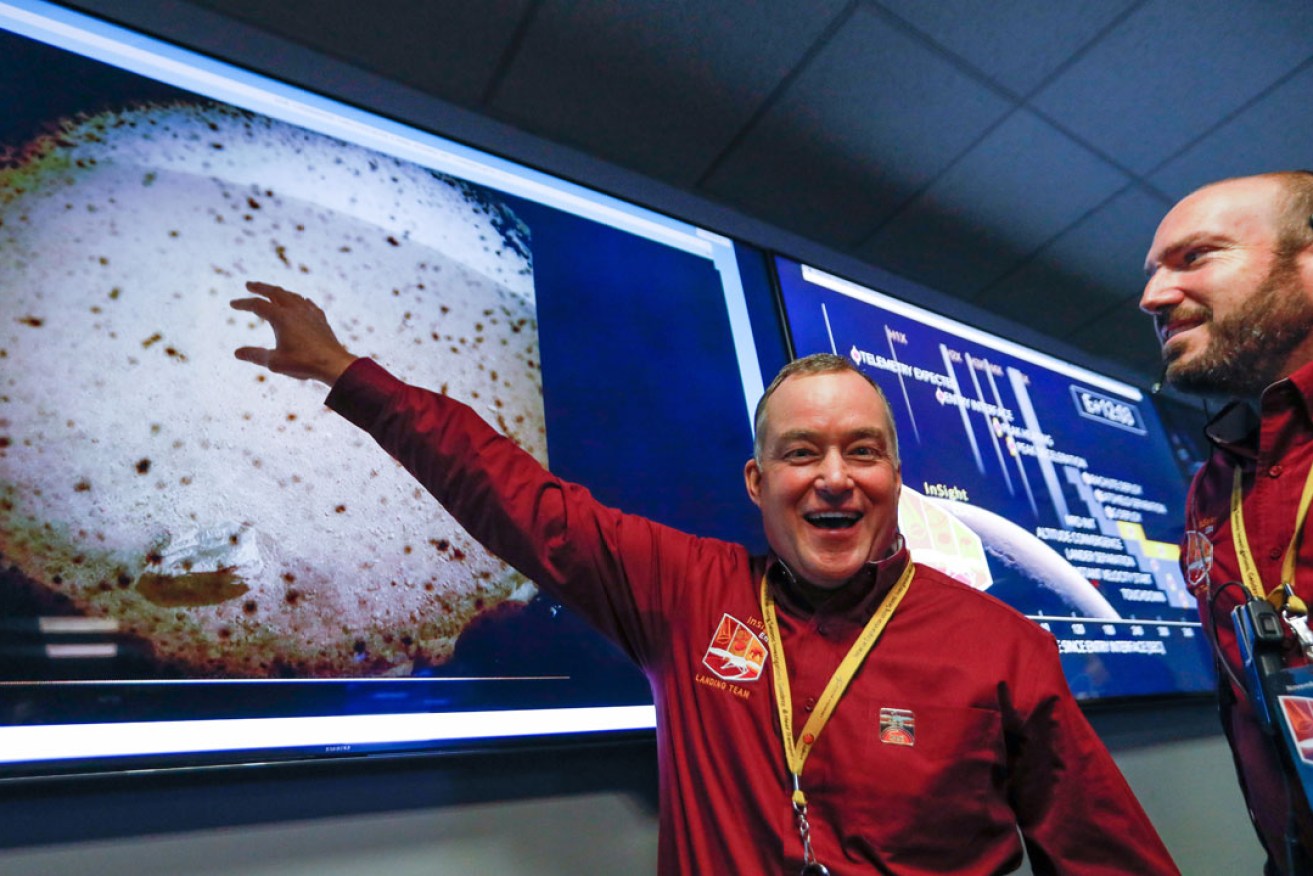“Flawless”: NASA spacecraft lands on Mars after perilous descent
A NASA spacecraft designed to burrow beneath the surface of Mars has landed on the red planet after a six-month, 480-million-kilometre journey and a perilous, six-minute descent through the rose-hued atmosphere.

Touchdown: NASA's Tom Hoffman points to the first image seen from the Mars InSight lander. Photo: EPA
Flight controllers at NASA’s Jet Propulsion Laboratory in Pasadena, California, leaped out of their seats on Monday and erupted in screams, applause and laughter as the news came in.
People hugged, shook hands, exchanged high-fives, pumped their fists, wiped away tears and danced in the aisles.
“Flawless,” declared JPL’s chief engineer, Rob Manning.
“This is what we really hoped and imagined in our mind’s eye. Sometimes things work out in your favour.”
Our @NASAInSight spacecraft stuck the #MarsLanding!
Its new home is Elysium Planitia, a still, flat region where it’s set to study seismic waves and heat deep below the surface of the Red Planet for a planned two-year mission. Learn more: https://t.co/fIPATUugFo pic.twitter.com/j0hXTjhV6I
— NASA (@NASA) November 26, 2018
A pair of mini satellites trailing InSight since their May liftoff provided practically real-time updates of the spacecraft’s supersonic descent through the reddish skies. The satellite also shot back a quick photo from Mars’ surface.
The image was marred by specks of debris on the camera cover. But the quick look at the vista showed a flat surface with few, if any, rocks – just what scientists were hoping for. Much better pictures will arrive in the hours and days ahead.
The three-legged InSight spacecraft reached the surface after going from 19,800kmh to zero in six minutes flat, using a parachute and braking engines to slow down. Radio signals confirming the landing took more than eight minutes to cross the nearly 160 million kilometres between Mars and Earth.
It was NASA’s ninth attempt to land at Mars since the 1976 Viking probes. All but one of the previous US touchdowns were successful.
NASA last landed on Mars in 2012 with the Curiosity rover.
Mars has been the graveyard for a multitude of space missions. Up to now, the success rate at the red planet was only 40 per cent, counting every attempted flyby, orbital flight and landing by the US, Russia and other countries since 1960.
The US, however, has pulled off seven successful Mars landings in the past four decades, not counting InSight, with only one failed touchdown. No other country has managed to set and operate a spacecraft on the dusty red surface.
InSight was shooting for Elysium Planitia, a plain near the Martian equator that the InSight team hopes is as flat as a parking lot in Kansas with few, if any, rocks.
Nothing like this has been attempted before at our next-door neighbour, nearly 160 million kilometres away. No lander has dug deeper than several centimetres, and no seismometer has ever worked on Mars.
By examining the interior of Mars, scientists hope to understand how our solar system’s rocky planets formed 4.5 billion years ago and why they turned out so different – Mars cold and dry, Venus and Mercury burning hot, and Earth hospitable to life.
-AP




